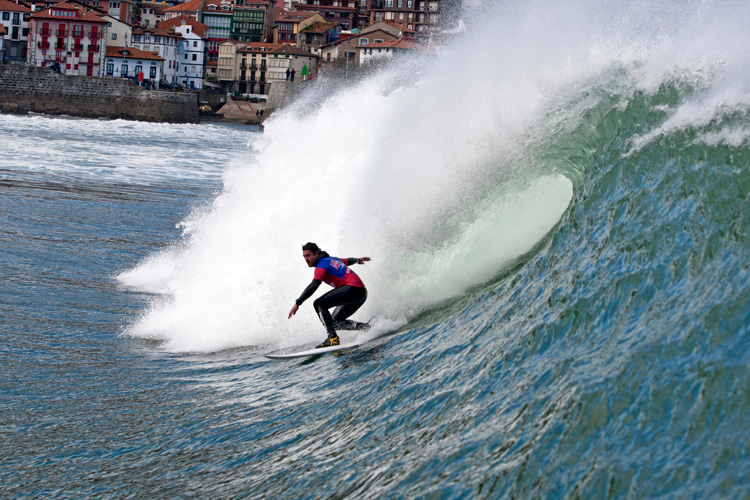Mundaka is a spectacular, world-class, left-hand barreling wave that breaks in a river mouth in the Basque Country, Spain.
It is tucked into the corner of the Bay of Biscay and produces long barreling tubes.
Mundaka is a highly sensitive surf break and can be significantly influenced by subtle changes and shifts in tides, rainfall, and swell and wind angles.
The wave itself results from particles that are washed down the Oka River and form a foiled, triangular sandbar at the river mouth, just 200 yards north of the Urdaibai estuary.
Once deposited, the sediments are sculpted by the interaction of tides and swells and give birth to a natural architectural masterpiece - the Mundaka sandbank.
The deep channel found at the end of the estuary, alongside a strong river mouth flow boosted by rain, helps improve the quality of the legendary curved sandbar.
The wave will then mirror the contour of the ocean floor and deliver a stunning liquid cylinder.
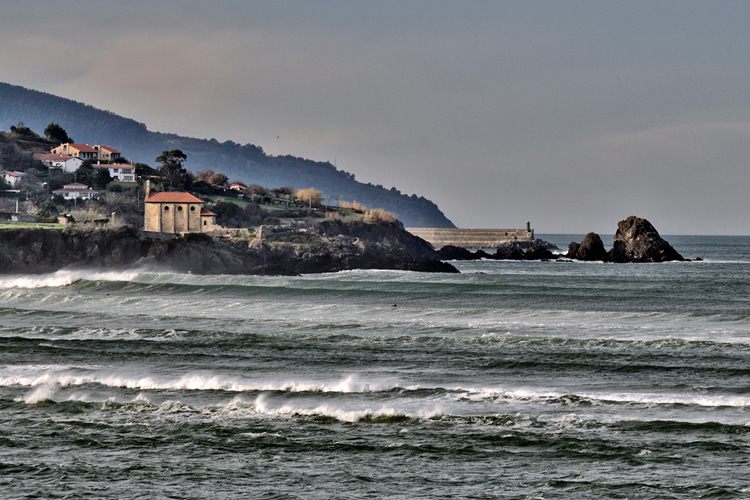
A Magical Surf Town
Mundaka is the capital of surfing in Spain, and in the past, it was even considered the Old Continent's best surf spot.
The fishing village breathes surfing all year round and attracts surf travelers from all around the world.
Mundaka started to become a popular surf destination between the 1960s and 1970s and was quickly regarded as one of Europe's finest gems.
The first surf contests were held in the 1980s, but it was the 1999 Billabong Pro Anglet/Mundaka that put the Spanish river mouth wave on the world map.
In 2005, and despite attempts to stop it, dredging of the local river mouth damaged the famous sandbank, and the iconic wave disappeared.
The local surfers lost their gem, surf competitions were canceled, and the town's economy suffered a major blow.
Fortunately, the wave has gradually recovered its original characteristics, and the unforgettable firing sessions returned to the Spanish spot.
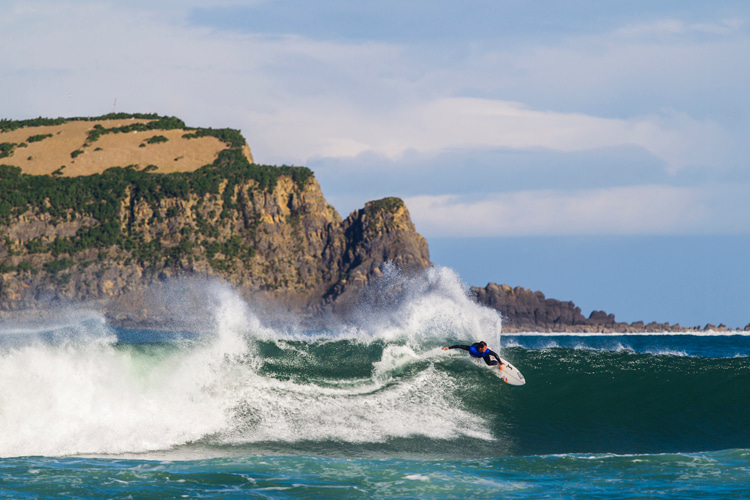
Ideal Conditions
Mundaka comes to life with a powerful Atlantic N/NW swell and strong offshore S/SW winds.
It rarely produces blue and hollow cylinders during summer but can deliver a few good small rollers for beginner surfers.
The perfect period of the year to visit is September through December.
However, the pristine conditions rarely last more than two days, making Mundaka a fantastic place to surf around 50 days a year.
The surf break can hold up to 12-foot wave faces, although its textbook barrels typically shine and stand out in the six-to-ten-foot range.
The larger the tidal range, the bigger the tubes on the incoming tide, and the harder the current will be on the outgoing tide.
Under optimal conditions, Mundaka will fire endless set waves that will peel down the line for 300 yards or more.
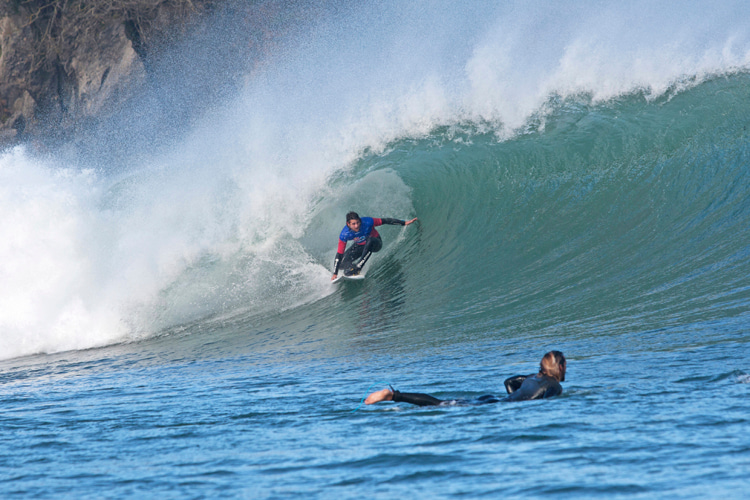
How to Surf Mundaka
Mundaka is a very long and fast wave that will require you to pick a high line to keep up with its freight train speed.
Actually, the best river mouth wave in Europe makes surfing look and feel like racing.
But this is definitely a spot for intermediate and advanced surfers. The take-offs are challenging and steep, and the wave sucks up hard.
On epic days, the Spanish point break is always extremely crowded, with the locals making sure they catch the most and the best waves.
And some of them are wearing helmets. Make no mistake: this is a punishing, heavy wave.
The best time of the day to surf Mundaka is from low to mid-tide. At high tide, the beautiful surf lines disappear like magic.
The access to the iconic Basque wave is a little bit tricky and made via the Port of Mundaka.
You'll need to jump in from the local harbor and paddle to the lineup. The view from the take-off zone is breathtaking.
But take it easy. The dreamy Spanish surf break is also home to a strong rip current that will quickly push you out to sea.
So, check your positioning regularly and try to stay in the surf zone.
If you get caught inside, ride the whitewater in and then paddle toward the edge of the river to access the channel.
The wave's final sections are less crowded but may also produce hollow tubes, depending on the quality of the sandbank.
Remember that no waves go unridden here.
When your session is over, find your way through the rocks located on the south side of the harbor.
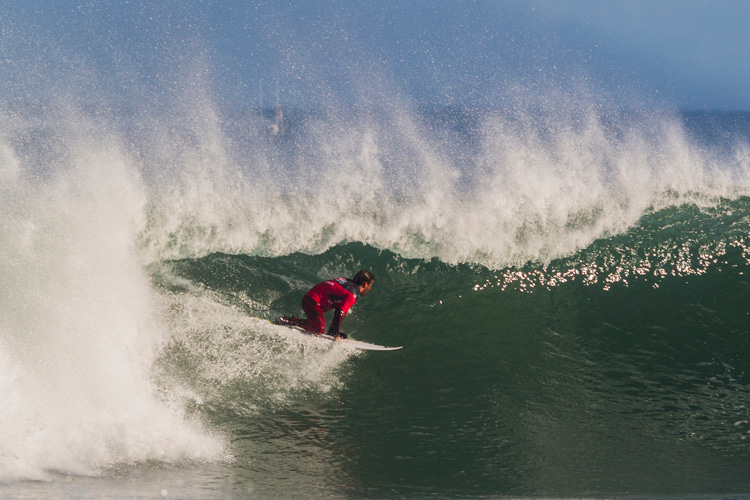
Mundaka | ID and X-Ray
Location: Bay of Biscay, Basque Country, Spain;
Type of Wave: Left-hand river mouth point break;
Swell Direction: N/NW;
Wind Speed and Direction: Strong S/SW;
Tide: Low to mid;
Size: 4-10 feet;
Best Months: September-December;
Best Board: Shortboard;
Water Temperature: 54-66 °F (12-19 °C);
Skill Level: Intermediate, advanced, and pro;
Length of the Ride: 50-400 yards;
Access: Channel to the left;
Bottom: Sand/sandbank;
Hazards: Rips, shallow waters, crowd, localism, sharks, heavy waves;
